Archive
Apple IIc/IIe Joystick Model A2M2002
Rare Apple IIc PAL Modulator/Adapter Model A2M4023
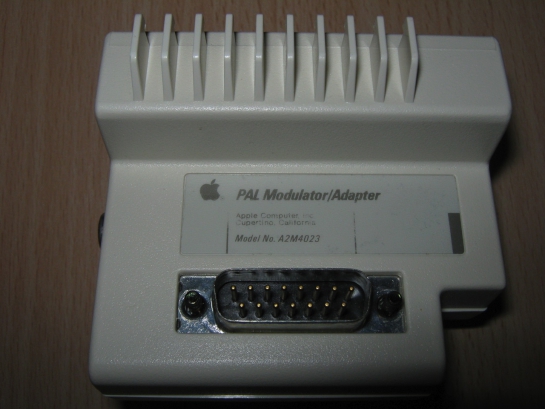
Autopsy:
Rare Apple IIc PAL Modulator/Adapter (RF / Composite Color Output) Model A2M4023.
source: wikipedia
Philips MSX 2 NMS-8250
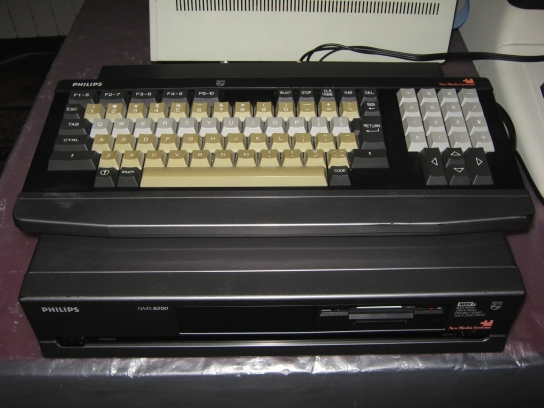
Autopsy:
The Philips NMS-8250, (NMS is short for “New Media Systems”) was a professional MSX 2 home computer for the high end market, with two built in floppy disk drives in a “pizza box” configuration. It featured professional video output possibilities, such as SCART for a better picture quality, and a detachable keyboard.
from Wikipedia:
MSX was the name of a standardized home computer architecture in the 1980s conceived by Kazuhiko Nishi, then Vice-president at Microsoft Japan and Director at ASCII Corporation. It is said that Microsoft led the project as an attempt to create unified standards among hardware makers. Despite Microsoft’s involvement, MSX-based machines were seldom seen in the United States and Britain, but they were popular in other markets.
Eventually 5 million MSX-based units were sold worldwide. It’s unclear why this attempt would be based in Japan rather than in the US or why Microsoft would not mention this involvement in its history while giving well known coverage to IBM-PC and Apple’s Macintosh, except for Nishi being the true sponsor and not Microsoft.
Nishi proposed MSX as an attempt to create a single industry standard for home computers. Inspired by the success of VHS as a standard for video cassette recorders, many Japanese electronic manufacturers along with GoldStar, Philips and Spectravideo built and promoted MSX computers. Any piece of hardware or software with the MSX logo on it was compatible with MSX products of other manufacturers. In particular, the expansion cartridge form and function were part of the standard; any MSX expansion or game cartridge would work in any MSX computer.
source: wikipedia msx.org msx.retro8bits.com sharksym.egloos.com
My homebrew C2N232 Interface
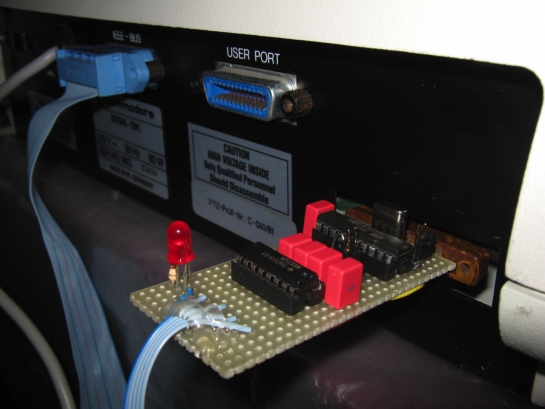
Autopsy:
This is my homebrew C2N232 Interface.
from Marko Mäkelä’s homepage:
The C2N232 is a small RS-232 interface that can be plugged to the cassette port of an 8-bit Commodore computer:
- PET series: 2001, 3000 series, 4000 series, 8000 series, 200 series
- PET-II series: CBM 500, 600 or 700 series (P500 or the B series)
- Commodore VC-20, VIC-20 or VIC-1001
- Commodore 64, 4064, 64c or 64G
- Commodore 128, 128D or 128DCR
- Commodore 264 series: 16, 116, plus/4 or 232
source: Marko Mäkelä’s Homepage
Commodore CBM 8250 Dual Drive Floppy Disk
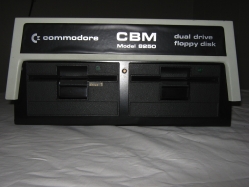
Autopsy:
from Wikipedia:
The Commodore 8050 and Commodore 8250 were dual unit 5¼” floppy disk drives for Commodore International computers. They used a wide rectangular steel case form similar to that of the Commodore 4040, and used the IEEE-488 interface common to Commodore PET/CBM computers.
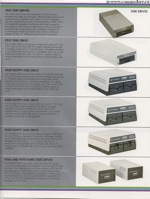 The 8050 was a single sided drive, whereas the 8250 could use both sides of a disk simultaneously. Both used a “quad” density format storing approximately 0.5 megabyte per side. The density of media was similar to later PC high density floppy disks, but the 8050 and 8250 could not use PC high density disks reliably. Since “quad” density disks were rare even at the time, users quickly found that typical double density floppy disks had enough magnetic media density to work in these drives.
The 8050 was a single sided drive, whereas the 8250 could use both sides of a disk simultaneously. Both used a “quad” density format storing approximately 0.5 megabyte per side. The density of media was similar to later PC high density floppy disks, but the 8050 and 8250 could not use PC high density disks reliably. Since “quad” density disks were rare even at the time, users quickly found that typical double density floppy disks had enough magnetic media density to work in these drives.
These drives were not dual mode, so they could not read or write disks formatted by the more common lower capacity Commodore 1541 or Commodore 4040 models. Some variants of these drives existed. The Commodore 8250LP was the 8250 in a lower profile, tan-colored case. The Commodore SFD-1001 was a single drive version of the 8250 in a Commodore 1541 style case (similarly to the Commodore 2031LP), often used by bulletin board systems for their physical similarity to 1541s and high capacity and speed.
source: wikipedia
Commodore PET CBM 8096-SK (Low serial number: WG #01234)
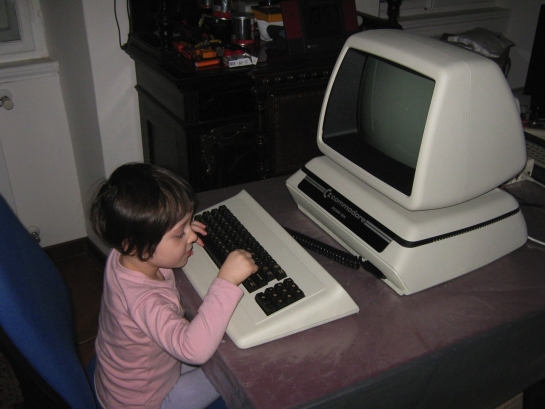
Autopsy:
from Wikipedia:
The Commodore PET (Personal Electronic Transactor) was a home/personal computer produced by Commodore starting in 1977. It was a top seller in the Canadian, United States, and United Kingdom educational markets, and was Commodore’s first full-featured computer and would form the basis for their entire 8-bit platform. n the 1970s, Texas Instruments was the main supplier of CPUs for use in calculators. Many companies sold calculator designs based on their chip sets, including Commodore.
However, in 1975 TI increased the price to the point where the chip set alone cost more than what TI sold their entire calculators for, and the industry they had built up was frozen out of the market. 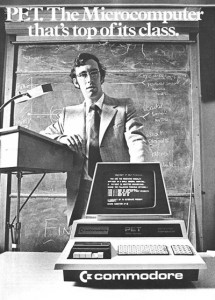 Commodore responded by looking for a chip set of their own they could purchase outright, and quickly found MOS Technology, Inc. who were bringing their 6502 microprocessor design to market.
Commodore responded by looking for a chip set of their own they could purchase outright, and quickly found MOS Technology, Inc. who were bringing their 6502 microprocessor design to market.
Along with the company came Chuck Peddle’s KIM-1 design, a small computer kit based on the 6502. At Commodore, Peddle convinced Jack Tramiel that calculators were a dead-end. Instead they should focus on making a “real” machine out of the KIM-1, and selling that for much higher profits. Tramiel demanded that Peddle, and Tramiel’s son, Leonard, create a computer in time for the June 1977 Consumer Electronics Show, and gave them six months to do it. The result was the first all-in-one home computer, the PET. The first model was the PET 2001, including either 4 KB (the 2001-4) or 8 KB (2001-8) of 8-bit RAM. It was essentially a single-board computer with discrete logic driving a small built-in monochrome monitor with 40×25 character graphics.
The machine also included a built-in Datassette for data storage located on the front of the case, which left little room for the keyboard. The data transfer rate to cassette was 1500 baud, duplicated for safety, giving an effective rate of 750 baud. The 2001 was announced at the ’77 Winter CES in January 1977 and the first 100 units were shipped in mid October 1977. However they remained back-ordered for months, and to ease deliveries they eventually cancelled the 4 kB version early the next year. Two more machines were released in the PET series.
The CBM 8000 included a new display chip which drove an 80×25 character screen, but this resulted in a number of software incompatibilities with programs designed for the 40 column screen, and it appears to have been unpopular as a result. The machine shipped with 32 kB standard as the 8032, but allowed another 64 kB to be added externally. Later the upgrade was installed from the factory, creating the 8096.
source: wikipedia petlibrary.tripod.com
Powersupply Adaptor for CPC 6128 with External Floppy Drive 3½
My homebrew Powersupply adaptor for Amstrad CPC 6128 with a External Floppy Drive 3½.
source: cpcwiki.eu jrp king homepage kjthacker.f2s.com
Amstrad (Schneider) CPC 6128 Parados Rom v1.1
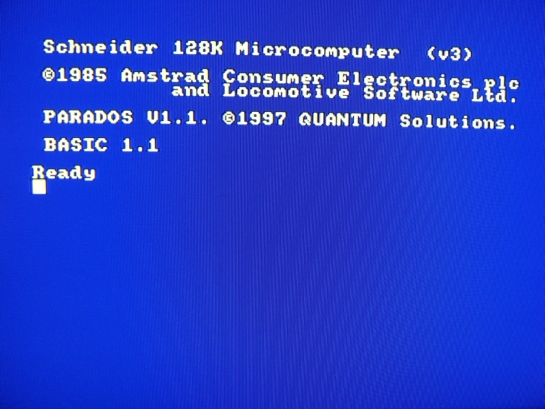
Parados Installation Photo Gallery:
ParaDOS is 16kB ROM that replaces the AmsDOS. Allows to use double-sided floppy disks and some more disk formats.
source: grimware.org
Apple IIc – Apple Disk Transfer ProDOS
![APPLE ][ Serial Cable & Serial USB Adapter APPLE ][ Serial Cable & Serial USB Adapter](https://www.nightfallcrew.com/wp-content/gallery/cache/1957__545x409_IMG_3870.jpg?fc00eb)
Foto review of the Serial cable and Transfer program:
ADTPro may be used to transfer Apple diskette/disk images in DOS or ProDOS/SOS format.
The Apple client side happens to run under ProDOS or SOS, but it is perfectly capable of reading or writing Apple DOS (or Pascal, or CP/M, or…) diskettes.
source: adtpro.sourceforge.net
Floppy Disk Drive 3½ for Amstrad CPC 6128 with Centronics Connector
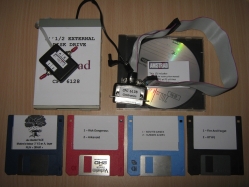
Foto review of 3½ Floppy adapter:
Thanks to B.C for the Floppy adapter.
source: ebay retro-zone.org amstrad hack page
Apple IIc (Keyboard Fixed / Replaced Floppy Eject button)
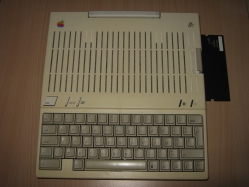
Autopsy:
from Wikipedia:
The Apple IIc, the fourth model in the Apple II series of personal computers, was Apple Computer’s first endeavor to produce a portable computer.
The end result was a luggable 7½ pound notebook-sized version of the Apple II that could easily be transported from place to place. The c in the name stood for compact, referring to the fact it was essentially a complete Apple II computer setup (minus display and power supply) squeezed into a small notebook sized housing.
While sporting a built-in floppy drive and new rear peripheral expansion ports integrated onto the main logic board, it lacked the internal expansion slots and direct motherboard access of earlier Apple IIs, making it a closed system like the Macintosh. However that was the intended direction for this model—a more appliance-like machine, ready to use out of the box, requiring no technical know-how or experience to hook up and therefore attractive to first-time users.
Useful links: Serial Cable Pinout & Apple Disk Transfer ProDOS – Apple 2c FAQ – Apple DOS 3.3 Dump – DOS Serial Transfer
source: wikipedia
ZZap 64 Magazine (Italian edition)
I have found some ZZap 64 Magazine (Italian edition) in my attic.
from Wikipedia:
Zzap!64 was a computer games magazine covering games on the Commodore International series of computers, especially the Commodore 64 (C64). It was published in the UK by Newsfield Publications Ltd and later by Europress Impact.
The magazine launched in April, with the cover date May 1985, as the sister magazine to CRASH. It focused on the C64 for much of its shelf life, but later incorporated Amiga game news and reviews. Like CRASH for the ZX Spectrum, it had a dedicated cult following amongst C64 owners and was well known for its irreverent sense of humour as well as its extensive, detailed coverage of the C64 scene.
The magazine adopted an innovative review system that involved the use of the reviewers’ faces, artistically rendered by in-house artists Oli Frey and Mark Kendrick, to express their reaction to the games. These eventually evolved into static cartoons as the magazine began catering for a younger market.
By 1992, the magazine had changed so dramatically in design and editorial direction that then-publisher Europress decided to relaunch the magazine. Thus, issue 91 of Zzap!64 became issue 1 of Commodore Force, a magazine that itself lasted until March 1994.
source: wikipedia zzap64.co.uk
Amstrad CPC Powersupply adaptor & RGB (Audio) Scart Cable
My homebrew Powersupply adaptor & RGB/Audio Scart cable for Amstrad CPC 464/6128.
source: cpcwiki.eu jrp king homepage kjthacker.f2s.com
(Amstrad) Schneider CPC 6128
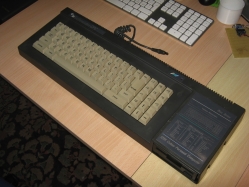
Autopsy:
from Wikipedia:
The Amstrad CPC (short for ‘Colour Personal Computer’) is a series of 8 bit home computers produced by Amstrad between 1984 and 1990. It was designed to compete in the mid-1980s home computer market dominated by the Commodore 64 and the Sinclair ZX Spectrum, where it successfully established itself, especially in the United Kingdom, France, Spain, and the German-speaking parts of Europe.
The series spawned a total of six distinct models: The CPC464, CPC664, and CPC6128 were highly successful competitors in the home computer market. The later plus models, 464plus and 6128plus, efforts to prolong the system’s lifecycle with hardware updates, were considerably less successful, as was the attempt to repackage the 464plus hardware into a game console as the GX4000.
The CPC models’ hardware was based on the Zilog Z80A CPU, complemented with either 64 or 128 kilobytes of memory. Their computer-in-a-keyboard design prominently featured an integrated data drive (compact cassette or 3″ floppy disk). The main units were only sold bundled with a color or monochrome monitor that doubled as the main unit’s power supply. Additionally, a wide range of first- and third-party hardware extensions such as disk drives (for the CPC464), printers, and memory extensions, was available.
The CPC series was pitched against other home computers primarily used to play video games and enjoyed a strong supply of first-party (Amsoft) and third-party game software. The comparatively low price for a complete computer system with dedicated monitor, its high resolution monochrome text and graphic capabilities and the possibility to run CP/M software also rendered the system attractive for business users, which was reflected by a wide selection of application software.
During its lifetime, the CPC series sold approximately 3 million units.
source: wikipedia cpcwiki.eu
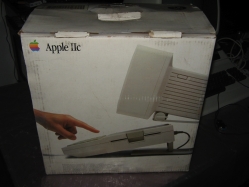










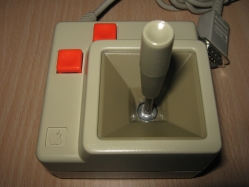














































































![APPLE ][ Serial Cable & Serial USB Adapter APPLE ][ Serial Cable & Serial USB Adapter](https://www.nightfallcrew.com/wp-content/gallery/apple-iic-apple-disk-transfer-prodos/thumbs/thumbs_IMG_3870.jpg?fc00eb)




![Apple ][ Receiving ASCII File Apple ][ Receiving ASCII File](https://www.nightfallcrew.com/wp-content/gallery/apple-iic-apple-disk-transfer-prodos/thumbs/thumbs_IMG_3837.jpg?fc00eb)

























































Recent Comments